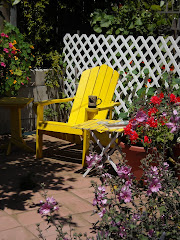The following is information on the upcoming Regional Water Quality Control Board hearing on the Sewer Project. The meeting will be at their Aerovista offices in SLOTOWN.
Central Coast Water Board staff has recently posted its May 5, 2011 Water Board Agenda. The agenda can be found here...
http://www.swrcb.ca.gov/centralcoast/board_info/agendas/2011/may/May_agenda.shtml
The Proposed Los Osos Water Recycling Facility Waste Discharge Requirements Order No. R3-2011-0001 can be found at Agenda No. 13. The link is active and will direct you to the following documents or select the following link.
http://www.swrcb.ca.gov/centralcoast/board_info/agendas/2011/may/Item_13/index.shtml
1) Staff Report (includes public comments and staff responses)
2) The proposed Water Discharge Requirements as well as the Monitoring and Reporting Program,
3) Central Coast Standard Provisions
4) Modifications and Updates from Waste Discharge Order Nos. Order R3-2003-0007 to Order No. R3-2011-0001
5) San Luis Obispo County Counsel letter responding to The Citizens for a Sustainable Community's request for additional environmental review.
6) Public Comments
Thank you,
Friday, April 22, 2011
Subscribe to:
Post Comments (Atom)












7 comments:
Thanks for the update.
So on Cinco De Mayo Los Osos is Numero 0001
When they whack the piñata a piece of paper will flutter out with 0.7 written on it
See you at the party, Don’t forget your maracas.
Correction it says ciete.
What's an order of magnitude among friends?
Total Nitrogen (as N)
mg/L
7 monthly avarage
10 daily maximum
Phew. Finally got through most of it. Heavy lifting, but nothing new. The usual delay pleas to do more reports (therefore nothing concrete to actually make timely moves to repair the groundwater problems, just an excuse to delay paying). The usual demands for Step/Steg (wrong venue). I saw lots of opportunity for cha-ching in the monitoring of it all. Plus lots of County time to be spent with the farmers.
Toons & Alon ...... Yes indeed, an interesting read.
I had no idea that our water table was so high in the areas described, nor did I know that they had in mind to use our septic tanks and leach lines to handle stormwater.
Liquefaction is a serious well documented problem in our basin, as any sane homosapien can easily google these days.
We were very lucky when the San Simeon 6.5 shake occured, only because that day (Dec 23 2003), our soil was rather dry, unlike this year. Oceano was not so lucky with their swampy soil.
Today, our stormwater rushes off to the bay in most areas, in others you can float a boat and row down the street.
Our County plan will undoubtedly help the liquefacion senerio by injecting the water everywhere, ten feet or so down in a hell of a lot larger volume than we are doing today.
In 2004 the same fault produced 23 earthshakes from 3.6 to 4.0 and one in Cayucaus at 4.0.
It's not a matter of "if", but a matter of "when" we will be liquefied and wading in 225,000 feet of raw sewage flowing uphill from pipes burried deep underground.
Now we have a newly found fault called "The Shoreline Fault", just half mile or so offshore. In all accounts it may be less dangerous to us, yet some of our local politicians are screeming like wounded eagles to shut down, or delay Diablo licensing, and at the same time sweeping the liquefaction factor deep underground, just a stone throw away.!!!!!!
Hi FOG, welcome back!
Yes, the tank/leach lines were part of the CCC permit. It isn't mandatory.
In your conclusions on liquefaction, are you primarily referring to the Fugro report used in the EIR? Where liquefaction was observed around the bay after the San Simeon quake? Or something else?
Here are some Fugro quotes:
"Soils having a low potential for liquefaction were generally encountered in the higher elevations of the site, such as the predominant dune ridges along Pismo Avenue, eastern Santa Maria-El Morro Avenue, and in the Broderson-Skyline Avenue area."
"Effluent Disposal Sites: The soils beneath the Broderson site that may be subject to a rise in groundwater level are generally dense and not prone to liquefaction."
"Based on previous investigations (Fugro, 2004a), the depth to groundwater is greater than 100 feet below the existing ground surface, and except for the near-surface loose dune sand deposits, the deeper soils encountered beneath the site are generally dense and not susceptible to liquefaction or seismic settlement. The near-surface loose dune sand would be considered potentially liquefiable in the event that they were saturated at the time of an earthquake; however, the groundwater depths will not be permitted to rise near to the ground surface at the site (Cleath and Associates, 2000). Therefore, Fugro (2004a) concluded there is essentially no change in the potential for liquefaction or seismic settlement to occur within the soils encountered as a result of the effluent disposal system and estimated mounding at the Broderson Site."
"Portions of the collection system network and prospective out-of-town/in-town conveyance routes traverse areas having a relatively high potential for liquefaction."
"Mid-Town Site. The site is underlain by a variable thickness of relatively loose to medium dense dune sand deposits that overlie relatively dense sand of the Paso Robles Formation (age-equivalent). During our previous investigation (Fugro, 2004a), the groundwater table was generally encountered within the denser sand and below the base of the dune sand deposits. Grading was recommended to remove the loose soil from improvement areas that may be vulnerable to seismic or static settlement. The denser sand within the Paso Robles Formation is estimated to have a relatively low potential for seismic settlement and liquefaction."
Aloha Toons
In reality, our "true" Upper Aquifer Groundwater depths are given in Exhibit 1, Table 1 & Attachment D map.
The 30 test holes drilled in a wide range "within the PZ" (where we are burying the pipes) show water at the following (rounded) depths;
2' (Baywood)- 6'-10'-10'=15'-16'-17'-19'-19'-20'-21'-21'-24'-25'-34'-36'-38-'-39'-39'-40'-51'-72-'-83'-91'-95'. Broderson Leach Field (PZ ?) was 154".
One hell of a lot of diggen & dewateren gonna have ta happen to get 225,000' of raw sewage carrying pipe slopan deep down, where it can do the most damage possible duren a big shake eh?
Toons .... One more thing.
I am sure that if you do your homework you will find that most every liquefaction seismic study available, for our high groundwater & soil, puts us in the "high dangerous liquefaction zone".
Have you read our State geologist and Cal Poly 1995 reports?
Post a Comment